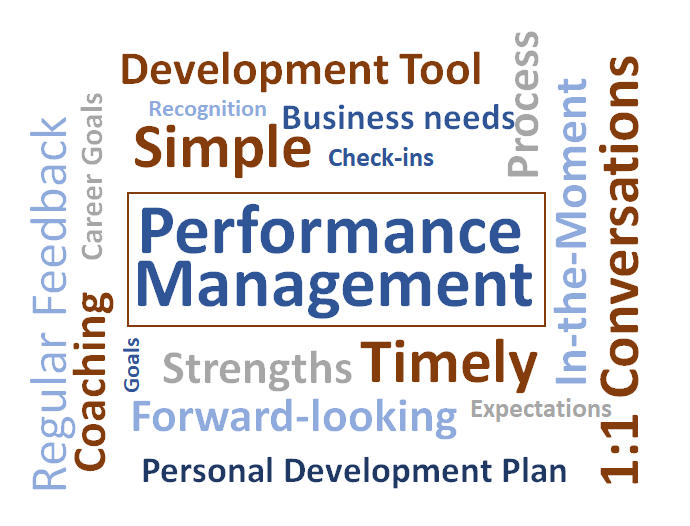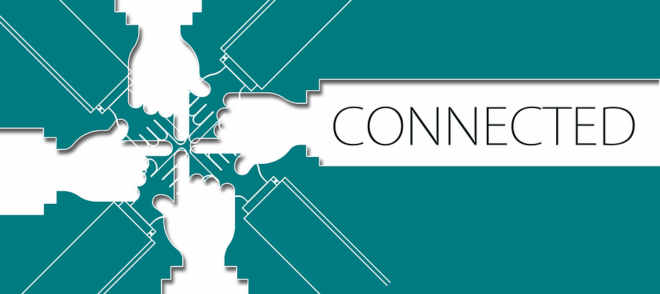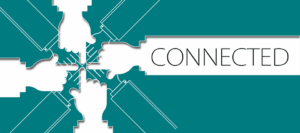As I wrote in my last article, the traditional annual performance review process is not working. Leaders and employees dread it. And there is little indication that the current model results in improved employee motivation or better business outcomes.
It’s time for a change. It’s time to make performance management a process, not just an event. It’s time to make it simple, timely, and meaningful – for both the employee and the organization.
Here are some examples of alternative approaches to the outdated annual review.
Adobe abolished the annual review several years ago in favor of more regular, informal “check-ins.” Managers and employees meet at the beginning of the year to mutually outline expectations for the year. This clarifies for both the manager and employee what the employee is being held accountable for. Managers have regularly scheduled one-on-ones with employees to provide feedback throughout the year. In addition, employees may also receive feedback from peers and other partners across the company.
Another process – Catalytic Coaching – uses 3 simple forms, 4 types of meetings, quarterly check-ins, and the leader as coach as the basis for leader/employee conversations that:
- Identify employee strengths and development areas from both the employee and leader perspectives
- Give the employee the opportunity to provide feedback to the leader
- Facilitate a discussion of the employee’s career goals
- Result in the employee’s personal development plan
- Include follow up and coaching from the leader to support implementation of the development plan
A third approach is based on the traffic signal metaphor: stop, start, continue. These are one-to-one conversations or check-ins held throughout the year (or on-the-spot, as appropriate) to determine what the employee should stop doing, start doing or continue doing to improve performance, advance development, achieve career goals, etc.
These are just a few examples of different approaches to performance management. Whatever approach you ultimately decide to use, the following features are key:
- Giving regular, timely, specific feedback. If there are performance issues, address those issues “in the moment.”
- Recognizing strengths rather than just focusing on weaknesses. Give employees opportunities to build on their strengths and develop in the areas where they are not as strong, relative to the needs of the organization and their own career goals.
- Adopting a coaching mindset. Feedback should be a development tool, not a report card. Make the process forward-looking rather than backward looking. Train all managers to be coaches rather than evaluators.
- Asking for their feedback. Create an environment where employees seek feedback and view it as a growth opportunity. Do this by setting the example. Ask for their feedback – “What can I do better?” “How can I help you?” – and then act on it, as appropriate.
- Having the career conversation. Show interest in your employees and their aspirations by having a career conversation. You may find that they have under-utilized skills or interests that you could leverage elsewhere in the company or call upon for a new project or business opportunity. The career path doesn’t necessarily have to be vertical; especially in smaller companies, providing cross-functional experience can be beneficial to both employees and the organization.
Have you taken a hard look at your performance review process lately? Are you giving your employees feedback only once a year or (worse) not at all?
Employees need to feel challenged and recognized. If you’ve been doing the same old, same old, when it comes to your performance review process, I highly recommend that you consider “disrupting the process” to create a feedback strategy that is simpler, more real time, and more effective.
If you are ready to review and change your performance management process, I’d love to work with you. Please contact me at michelle@connecttohr.com.







 about their customers, about their community – significantly outperform their less-caring peers. People want to work there. Customers want to buy there. And they all want to tell their friends.
about their customers, about their community – significantly outperform their less-caring peers. People want to work there. Customers want to buy there. And they all want to tell their friends. Over the past few months I’ve been talking about the skills required to be an effective leader. So far I’ve talked about listening, self-awareness and conversational intelligence. Another skill that is being increasingly recognized as an essential leadership skill is empathy. Although we’re not seeing it demonstrated much on the national stage, empathy has been called THE skill for the 21st Century.
Over the past few months I’ve been talking about the skills required to be an effective leader. So far I’ve talked about listening, self-awareness and conversational intelligence. Another skill that is being increasingly recognized as an essential leadership skill is empathy. Although we’re not seeing it demonstrated much on the national stage, empathy has been called THE skill for the 21st Century. As leaders, we each have multiple conversations throughout our day. A one-on-one with an employee. A strategy meeting with our team. A performance issue discussion with HR. A budget update with our own leader. And so on.
As leaders, we each have multiple conversations throughout our day. A one-on-one with an employee. A strategy meeting with our team. A performance issue discussion with HR. A budget update with our own leader. And so on. We hear a lot about leaders who are great speakers. Who can inspire through their words, capture the attention of a large audience, or engage others through a compelling story. But another leadership skill that is just as important – if not more so – is the ability to listen. Leaders who demonstrate to their employees and their teams that they listen – really listen – build trust, promote engagement, and inspire loyalty.
We hear a lot about leaders who are great speakers. Who can inspire through their words, capture the attention of a large audience, or engage others through a compelling story. But another leadership skill that is just as important – if not more so – is the ability to listen. Leaders who demonstrate to their employees and their teams that they listen – really listen – build trust, promote engagement, and inspire loyalty. As I discussed in my last blog, working with an executive coach can help you prepare for a transition, work through a specific issue, and/or overcome a derailing behavior. Coaching can also help you develop in place to become the leader you want (and need) to be. But where do you begin? What are the essential skills needed to be an effective leader today?
As I discussed in my last blog, working with an executive coach can help you prepare for a transition, work through a specific issue, and/or overcome a derailing behavior. Coaching can also help you develop in place to become the leader you want (and need) to be. But where do you begin? What are the essential skills needed to be an effective leader today?


